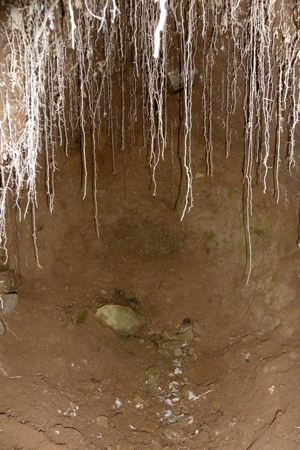
You’d never know it trekking across Katmai’s frozen landscape, but even in the depths of winter, bears occasionally stir. Katmai’s brown bears hibernate for 5 to 6 months or more. Remarkably though, some of these bears are giving birth in January and February.
In placental mammals, larger species generally give birth to larger offspring (picture the size of cattle, elephants, and whales when they are born). This is not the case with bears. Brown bears are extremely small, averaging about 1 pound (.45 kg), at birth. This is tiny, especially compared to the mother bear which may weigh easily 400 pounds. Brown bear cubs are from 1/3 to 1/10 of that predicted for female mammals of comparable size.They are also blind and helpless at birth. Why would brown bears give birth to such small and vulnerable offspring? Like many natural phenomenon, no one knows for sure but biologists have some ideas.
During hibernation, bears neither eat nor drink. They are surviving solely on stored body fat. In a healthy hibernating bear, fat is in excess but protein and carbohydrates are limited. Developing embryos in humans as well as in bears can’t grow on fat alone. They need protein and carbohydrates in order to grow and develop.
Mother bear can only provide a limited amount of protein during the 50 day gestation period of her cubs. She needs to conserve almost all protein for herself in order to maintain muscle mass. Perhaps, mother bear can’t “afford” to provide protein to the growing cub. What can a fat, sleeping bear provide then? Milk fat.
Once the cub is born, it soon begins to nurse. A newborn cub’s physiology changes from one that couldn’t survive on fat in the womb to a system that can better metabolize fat. Mother provides all the nourishment that the cub needs and the den offers warmth and protection. Even though the bear has been born, for the next several months the den acts as a surrogate womb for the rapidly growing cub.

Bear cubs in Katmai spend the first few months of their lives inside of the den their mother dug the previous fall.
Hypothetically, bears are faced with an evolutionary “choice” when it comes to the timing of birth. They could have a longer gestation period and deplete the mother’s protein stores which may reduce her chances for survival. Or, they can give birth to very small, vulnerable offspring and nurse them as they continue to grow in the protective environment of the den. Bears have chosen the latter option.
Plants and animals have countless ways to deal with winter’s threats and opportunities. How and when bears give birth is another example of this. The timing and physiology behind the birth of a brown bear provides another amazing example of bears’ ability to adapt and survive.
